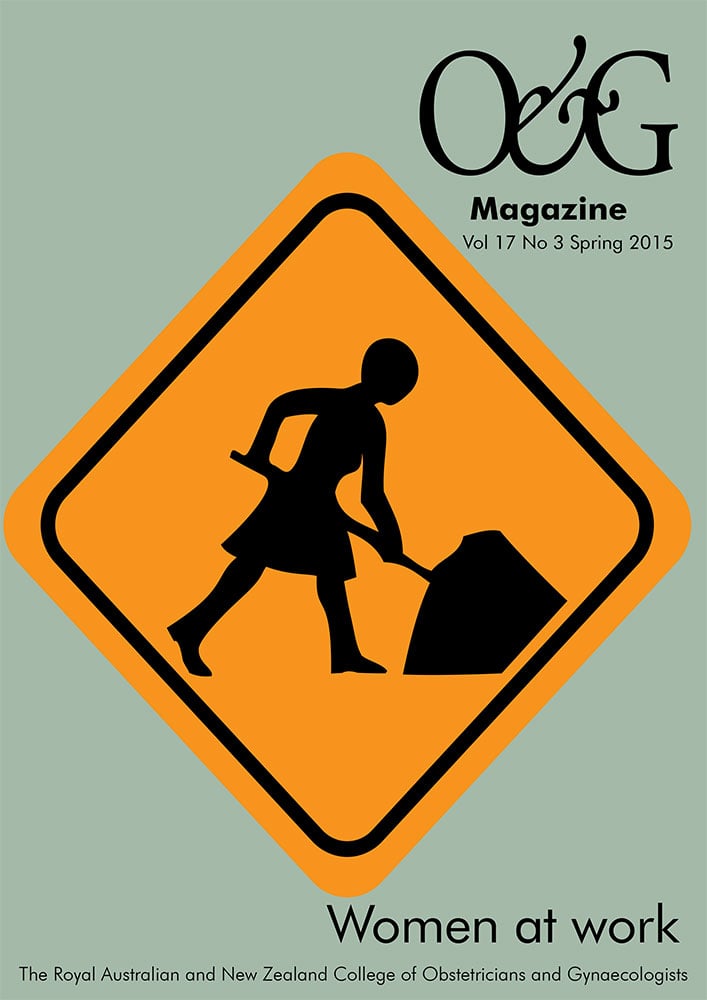Pregnant women seeking information about the safety and suitability of their work expect to receive clear advice about workplace risks. For most women with uncomplicated pregnancies, the type of work they perform does not pose any specific health risk to them or their babies. Some workplace pregnancy health risks, such as exposure to ionising radiation, are well known; however, in many jobs there is a relative lack of research and good quality evidence. This article provides an introduction to, and resources for, assessing fitness for work during pregnancy. The process includes considering individual risk factors, an assessment of the workplace hazards and appropriate risk communication with the woman and, where appropriate, her employer. While evaluating potential work- related health risks doctors should also be mindful of the health benefits of good work.
Managing workplace risks
The ideal solution is to eliminate any hazard from the workplace that could affect women of reproductive capacity. Where that is not possible then risks must be minimised and managed. The model Work Health and Safety Act states that employers have ‘a duty of care to ensure health and safety, so far as is reasonably practicable, by eliminating risks to health and safety. If this is not reasonably practicable, risks must be minimised so far as is reasonably practicable.’ Workplaces should have policies and procedures that comply with all relevant laws, including equal employment opportunity and diversity legislation.
Pregnant women in most roles are not legally obliged to inform their employer they are pregnant. However, if there are potential workplace hazards then it is best for discussions to occur as soon as possible. Where necessary, the duties may need modification or adaptation. In some circumstances, the worker may need to be provided with an alternative role. In some safety-critical roles, for example, commercial aviation and in the armed forces, women may be required to notify the organisation as soon as they know they are pregnant to ensure safety. It is important to consider the expectant mother’s understanding of the hazards in her workplace as that will influence the nature of discussions, particularly in situations where it is difficult to quantify risk.
Individual factors
There is a range of individual factors that can impact both the pregnancy and fitness for work. Some examples include:
- pre-existing medical conditions, for example hypertension and diabetes;
- specific pregnancy-related conditions, for example morning sickness, placenta praevia or multiple pregnancies; and
- mental health conditions, for example perinatal
Evolving risks during pregnancy
Fitness for work can evolve during the course of a pregnancy. For example, the capacity to perform shift work or to work in hot environments can be affected during the first trimester by symptoms of morning sickness and fatigue. Standing and lifting capacity may be reduced during the second trimester, owing to backache and increased weight. During the third trimester, increased abdominal girth may preclude tasks such as confined-space work and other physically demanding duties. The risks to the fetus evolve through the different stages of development. For example, exposure to ionising radiation is of greatest concern during the first trimester, whereas it is thought that exposure to excessive noise may be a greater risk after the fetal cochlear has developed in the second trimester.
Hazards and clinical resources
Some workplace hazards, such as lead and cytotoxic drugs, are well known and the risks have long since been recognised. Any workplace where such hazards are present should have clear, established procedures in place to protect women of reproductive capacity. There are, however, many potential workplace hazards where there is limited evidence or the risks are uncertain. Table 1 shows selected examples of workplace hazards together with references and links to useful clinical resources.
Ergonomic advice
Questions are commonly asked about physical work activities. The Society of Obstetricians and Gynaecologists of Canada advises the doctor, nurse or midwife may recommend changes if work involves the following:
- stooping or bending over more than ten times each hour;
- climbing a ladder more than three times during an eight-hour shift;
- standing for more than four hours at one time;
- climbing stairs more than three times per shift;
- working more than 40 hours per week;
- shift work;
- lifting more than 23kg after the 20th week of pregnancy;
- lifting more than 11kg after the 24th week;
- stooping, bending or climbing ladders after the 28th week;
- needing to lift any heavy items after the 30th week; or
- needing to stand still for more than 30 minutes of every hour after the 32nd
Further discussion and assessment may be warranted in individual cases. An ergonomic assessment of the pregnant woman’s workplace may provide recommendations to reduce or eliminate risks.
| Hazard type | Examples | Clinical resources |
| Physical | Ionising radiation | Health and Safety Executive, Working safely with ionizing radiation, Guidelines for expectant or breastfeeding mothers, www.hse.gov.uk/pubns/indg334.pdf |
| Noise | Centers for Disease Control and Prevention, Reproductive Health and the Workplace, www.cdc.gov/niosh/topics/repro/noise.html | |
| Biological | Infectious diseases | Infection Risks to new and expectant mothers in the workplace, HSE Advisory Committee on Dangerous Pathogens, HSE Books, 2005, www.hse.gov.uk/pubns/priced/infection-mothers.pdf |
| Chemical | Organic solvents, anaesthetic gases, pesticides and lead | The Motherisk program, the Hospital for Sick Children, Toronto, www.motherisk.org/women/occupationalExposures.jsp |
| Ergonomic | Prolonged working hours, shift work, heavy physical workload, prolonged standing or sitting | Royal College of Physicians, UK. Pregnancy: occupational aspects of management. February 2013, www.rcplondon.ac.uk/resources/pregnancy-occupational-aspects-management |
| Psycho-social | High job demands with low control | Psychosocial Assessment and Depression Screening in Perinatal Women, Marcé International Society Position Statement 2013, www.ranzcog.edu.au/college-statements-guidelines.html |
| Violence, harassment and bullying | Australian Human Rights Commission, Workplace bullying: Violence, Harassment and Bullying Fact sheet, www.humanrights.gov.au/workplace-bullying-violence-harassment-and-bullying-fact-sheet |
Workers flying to remote locations
Working in remote locations is not uncommon in Australia and doctors providing advice to pregnant workers should have access to information about the care available regionally if a complication was to occur. After 28 weeks, women need to carry a letter from a doctor or midwife, dated no more than ten days before travel, confirming fitness to fly, the estimated due date, single or multiple pregnancies and the absence of complications. Individual airlines have different recommendations; however, they commonly advise that for flights of four hours’ duration or greater, for routine pregnancies, women can travel up to the end of the 36th week for single pregnancies and to the end of the 32nd week for multiple pregnancies. On flights less than four hours’ duration, for routine pregnancies, most say women can travel up to the end of the 40th week for single pregnancies and to the end of the 36th week for multiple pregnancies. After delivery, medical clearance is required for travel within seven days.
Return to work after maternity leave
Returning to work after maternity leave can be influenced by a range of factors such as breastfeeding and fatigue. Women with perinatal depression can experience difficulties with cognitive work performance. In such cases, an individualised vocational rehabilitation plan can be developed to establish a suitable and graded return-to- work program.
Complex cases
In the assessment of complex fitness for work cases, occupational physicians can assist treating obstetricians and general practitioners by using their training in ergonomics, toxicology and risk communication. After assessing the patient, informed consent is obtained to liaise with the employer. A site visit to the workplace can assess the role, identify hazards and quantify risks as part of a structured risk assessment process. The goal is to negotiate an individual, agreed and safe work plan. Monitoring and reassessing fitness for work as the pregnancy progresses is part of the process.
Acknowledgements
I acknowledge the work of Dr Caron Jander, FAFOEM, in leading the preparation of the Australasian Faculty of Occupational and Environmental Medicine (AFOEM) Position Statement on Pregnancy and Work, with input from the AFOEM Policy and Advocacy Committee and the staff of the RACP Policy and Advocacy Unit.






Leave a Reply